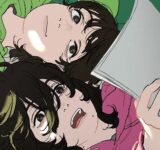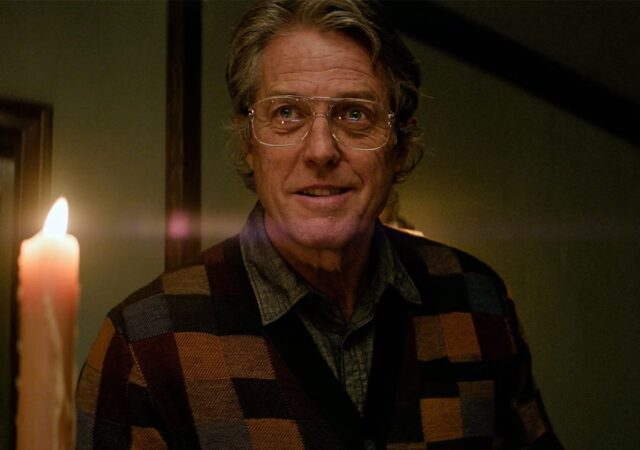When the first season of Arcane premiered in 2021, it changed how audiences viewed video game adaptations. Set in the League of Legends universe, the show did not settle for being a mere spin-off; it became its own masterful narrative, rich in emotion and visual innovation. With the second season of Arcane now available, viewers have wondered if it can live up to its predecessor’s high standards. This new season continues to explore Piltover and Zaun, building on the original story’s depth and complexity. It preserves the qualities that made the first season so captivating—stunning animation, layered characters, and a resonant storyline—while revealing new facets of its world and inhabitants.
The animation is again a key strength. In its first season, Arcane blended 2D and 3D techniques to challenge expectations. Now, Fortiche Productions pushes its craft further. Each frame is painstakingly detailed, from Zaun’s neon-lit alleys that pulsate with hidden threats to Piltover’s decaying but still magnificent structures. Both cities feel alive, reacting to the turmoil their residents endure. While the first season impressed, the second astounds.
Some scenes are so visually arresting that it’s hard not to pause and admire the artistry. Fans have compared it to Spider-Man: Across the Spider-Verse, and though their aesthetics differ, both productions share a willingness to take creative risks.
This achievement comes at a cost. Showrunner Christian Linke notes that each second of footage can take an animator up to a week to complete. Such labor involves hundreds of artists working with extraordinary care, explaining why there are long gaps between seasons. The rumored $250 million budget for production and marketing underscores the show’s ambition. That investment is visible on-screen. Every shadow, highlight, and texture stands out, ensuring that Arcane Season 2’s visuals are at least on par with, and sometimes superior to, those of Arcane Season 1.

Yet Arcane is more than a pretty picture. At its core, it’s about power and the human costs of pursuing it. The narrative picks up right after Arcane Season 1’s explosive finale. Mel and Jayce awaken to a Piltover and Zaun still reeling from devastation. The story unfolds in three acts, each examining the consequences of past alliances and betrayals. Characters who once cooperated now find themselves pulled apart by clashing ideals. The tension between Piltover’s elite and Zaun’s oppressed citizens intensifies, inching both sides toward open conflict. Arcane never shies away from complexity, asking who should wield power, who suffers beneath it, and what it takes to resist its abuses.
Personal relationships remain the emotional core. Vi and Jinx, sisters fractured by tragedy, must face the aftermath of their actions. The show delves deeper into Jinx’s psyche, portraying her as both victim and villain. Her descent into chaos feels inevitable and heartbreaking.
This duality is one of Arcane’s greatest strengths—Jinx is not simply evil; she is broken, her pain warping into violence. Meanwhile, Vi must grapple with the burden of responsibility. No longer just an impulsive fighter, she grows into someone who understands the weight of leadership and the challenge of healing rather than simply avenging past wrongs.

Caitlyn’s moral compass is also tested as she navigates Piltover’s political world. Her relationship with Vi, hinted at before, grows more complicated when their priorities clash. Vi’s thirst for revenge does not always align with Caitlyn’s devotion to justice. This tension creates some of the season’s most emotionally charged moments, as both struggle to remain true to their values amid rising violence. Love, trust, loyalty, and duty all collide as the political and personal converge.
Jayce and Viktor continue to represent two sides of Piltover’s ambition. Jayce seeks a path he believes is just, but sees the darker side of wielding power. Viktor, driven by intellectual hunger and desperation, slides into morally ambiguous territory.
How far will he go to achieve greatness, and what lines will he cross along the way? Their conflict speaks to a broader theme: the same impulses that inspire creation can also lead to cruelty.

Characters like Ekko and Heimerdinger play key roles. Ekko embodies hope and resilience, representing a younger generation determined to rise above despair. Heimerdinger, wise but cautious, attempts to maintain stability even as the world fractures around him. Both remind us that everyone, no matter their status, is caught in the tide of unfolding history.
Arcane’s world feels layered and authentic because it refuses to present a simple battle between good and evil. Instead, it offers a nuanced view of class struggles, political intrigue, and moral ambiguity. Decisions carry consequences that ripple outwards.
Piltover’s elite cannot hide behind wealth forever, and Zaun’s oppressed citizens wonder whether liberation is worth the price they might pay. Power is never neutral: it corrupts and inspires, crushes and elevates. Each city mirrors the other, exposing shared flaws and hidden aspirations.
The soundtrack remains integral to Arcane’s emotional impact. Season 2’s music complements its heightened stakes. The show continues the blend of atmospheric scores and electronic beats that Season 1 established. Each track suits its moment, enhancing tension or underscoring a quieter, more reflective scene. With over 20 new original songs, the world feels richer. The opening theme, “Enemy” by Imagine Dragons and J.I.D, returns in a fresh variation, while new compositions punctuate key turning points. The music is part of the narrative’s fabric, as essential as the dialogue and imagery.
Still, Season 2 is not without flaws. Pacing poses a challenge. The first two acts proceed more deliberately than Season 1, allowing deeper character exploration. This slow burn gives viewers time to understand motivations and internal conflicts before the action escalates.
Yet this careful buildup comes at a cost. The final act feels rushed, racing through crucial plot points. Some newer characters who could have benefited from more development remain underutilized.
This abrupt shift creates a sense of incompleteness, suggesting that the story is part of a larger saga rather than a self-contained chapter. The showrunners admit that about 60 minutes of scenes were cut, and that absence shows in the uneven conclusion.

This imbalance affects a few character arcs. While Jinx’s descent remains compelling, some secondary figures receive less careful treatment. Their decisions can seem predictable or insufficiently explained. Although this issue does not erase the season’s successes, it prevents it from achieving the near-perfect balance of the first season. The tension between ambition and execution is evident. Viewers may wish certain elements had more room to breathe.
Despite these missteps, Arcane remains a remarkable achievement. Few shows combine visual artistry, thematic complexity, and character-driven storytelling so effectively.
Season 2 builds on what made the first season special, extending its emotional reach and providing deeper insights into its characters’ inner lives. Their struggles feel authentic and human.
Fans who loved the first season will find this a satisfying continuation, while newcomers still get a compelling entry point, though they may feel motivated to revisit Season 1 to grasp every subtle reference.
The show’s reputation speaks for itself, with each episode holding a 9+ rating on IMDb. Arcane thrives because it confronts difficult themes: corruption, identity, and redemption. It never takes shortcuts or relies solely on spectacle. Instead, it challenges characters to face moral dilemmas with no easy answers. This honesty gives the series depth and lasting resonance.

Although presented as the show’s final season, the creators have hinted at future Arcane-related projects. Spin-offs, prequels, or other expansions might follow. Such possibilities raise hopes that unresolved threads will eventually find closure. Piltover and Zaun still have countless stories waiting to be told. The complexities of Piltover’s technology, the hidden corners of Zaun’s underbelly, and the uncertain destinies of many characters could all form the basis of new narratives.
Even if Season 2’s finale feels more like a stepping stone than a definitive endpoint, it does not diminish the show’s achievements. Arcane proves that thoughtful storytelling transcends medium and source material. One need not have played League of Legends to appreciate it. Arcane stands on its own merits. Its layered characters, intricate themes, and sumptuous visuals speak to something universal.
The season’s thematic currents—who holds power and why, the tension between progress and justice, and the costs of betrayal and forgiveness—have real-world echoes.
The show does not offer easy solutions. Instead, it invites viewers to think more deeply about historical forces, social hierarchies, and collective responsibilities. Arcane recognizes that everyone is shaped by personal history and environment.
If there is a takeaway, it’s that growth and change often come with pain. Characters must face their failures and regrets before they can move forward. Some rise to the occasion with courage and grace, others resort to violence or crumble under pressure, but the possibility of redemption lingers. Even those who have committed terrible acts are not necessarily beyond hope, though their choices matter.

The world-building deserves praise as well. Piltover and Zaun are not just places; they represent ideologies. Piltover aspires to progress but hesitates to share its prosperity. Zaun, though ridden with desperation, shines with grit and resilience. Their tension provides a rich backdrop, enhancing character arcs and giving every conflict deeper stakes. In such a setting, no victory comes without sacrifice.
The animation ensures viewers remain immersed. Artists focus not only on grand set-pieces but also on subtle gestures—a worried glance, trembling hands, dust settling in a dim alley. These details create intimacy and depth, binding audience and narrative together, making the world tangible and alive.

As Season 2 concludes, viewers might feel torn. The journey is spectacular but not entirely complete. Pacing issues linger, leaving the sense that more time could have allowed for a richer story. Still, Arcane’s ambition earns admiration. It does not opt for safe, familiar storytelling. It strives to be more than an adaptation—more than entertainment. It aims for art.
That drive makes Arcane compelling. It respects its source material while daring to expand and deepen it. It grants complexity to its characters, anchoring them in a reality that feels both fantastical and relatable. It trusts its audience, never underestimating our ability to appreciate its depth or artistry.
For those who value strong narratives, multidimensional characters, and breathtaking visuals, Arcane remains essential viewing. It challenges the notion that animation is limited in scope. It proves that animated series can explore mature themes and emotional intricacies as effectively as any live-action production.
Arcane Season 2 struggles with pacing and leaves some threads hanging. Yet these are minor flaws in an otherwise remarkable tapestry.
The show has secured its place as one of the finest animated series ever produced. Its impact will endure, prompting discussions about adaptation, innovation, and the power of layered storytelling long after its credits roll.
Above all, it shows that great stories can emerge from unexpected places and inspire us to think more deeply about our own worlds.
Arcane Season 2 reaffirms that the series stands among the best currently available, regardless of medium. It continues to raise the bar for animated storytelling. With its visual splendor, narrative ambition, and emotional depth, it offers something extraordinary. Even with imperfections, it is a triumph of craftsmanship and vision.






















